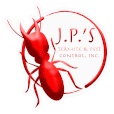How To Identify That You Have A Termite Problem
There are two types of termites we typically encounter in Florida, Subterranean Termites and Drywood Termites. Understanding the differences between the two is very important because they each have different ways of pestering your home or property.
The first clue that you have a termite problem is small flying insects near your windows. They will leave behind their discarded wings and are known as termite swarmers. This issue typically takes place in the spring time. A major difference between the two termites is the subterranean termite nest in the ground, while the drywood termite nest inside the wood they are infesting.
The first clue that you have a termite problem is small flying insects near your windows. They will leave behind their discarded wings and are known as termite swarmers. This issue typically takes place in the spring time. A major difference between the two termites is the subterranean termite nest in the ground, while the drywood termite nest inside the wood they are infesting.
Why You Might Have Termites
Subterranean termites typically create nests in soil and are the most destructive termite in the U.S. The subterranean termite infestation at structures are not able to be seen and it’s hard to tell you have an infestation until the damage is bad. They make mud tubes to tunnel through the ground. These tubes protect them from predators and dehydration.
Drywood termites don't dig mud tubes as they need zero contact with soil. Drywood termites will infest your home by air and require less moisture.
Drywood termites don't dig mud tubes as they need zero contact with soil. Drywood termites will infest your home by air and require less moisture.
Reasons To Treat Your Termite Problem Immediately
Termite infestations can cause damage over a short period of time. For example, a 2x4 piece of lumber can be consumed over a period of 5 months with a colony of 2 million. If a colony infest a building, the noticeable damage will begin to appear between three and eight years, depending on the size of the colony.
Drywood termite colonies are smaller than subterranean termites. Drywood termites damage progression is much less extensive due to the target area be generalized to one or only a few locations.
If you believe you are having a termite infestation, please let us know and we will come take a look.
Drywood termite colonies are smaller than subterranean termites. Drywood termites damage progression is much less extensive due to the target area be generalized to one or only a few locations.
If you believe you are having a termite infestation, please let us know and we will come take a look.
Take your home back from pests.
Fill out the form below to let us know more about how we can help you.



